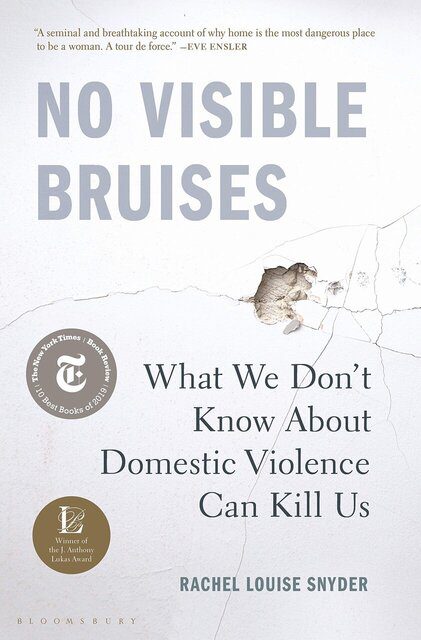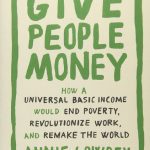The only thing more unthinkable than leaving was staying; the only thing more impossible than staying was leaving. – Eat, Pray, Love
In No Visible Bruises, journalist Rachel Louise Snyder examines how domestic violence is a pressing social crisis and is at the root of other crimes such as mass shootings, familicides, homicides, etc. Despite the World Health Organization deeming it a ‘global epidemic’. In America, domestic violence accounts for 15 percent of all violent crime, and yet it remains locked in silence.
In America, domestic violence accounts for 15% of all violent crime.
Our family and friends easily oversimplify domestic Violence; the common response to emotional and domestic abuse by our loved one is usually: “If he hits you, just leave,” “why did you stay?”. Rachel shares many stories of domestic violence, the complexity, societal stigma, and tools to deal with domestic violence issues.
“An average, in fact, of 137 women each and every day are killed by intimate partner or familial violence across the globe. This does not include men. Or children.”
False Assumptions
“Like many people who hold a casual acquaintance with a problem, I believed all the common assumptions: that if things were bad enough, victims would just leave. That restraining orders solved the problem (and that if a victim didn’t show up to renew a restraining order, the problem had been solved). That going to a shelter was an adequate response for victims and their children. That violence inside the home was something private, unrelated to other forms of violence, perhaps most notably mass shootings. That a lack of visible injury signaled a lack of seriousness. And, perhaps most of all, that unless we stand at the receiving end of a punch, such violence had nothing at all to do with us.”
“Nearly 90% of domestic violence homicide victims were both stalked and beaten in the year prior to their deaths.”
Domestic Violence
“Domestic violence is like no other crime. It does not happen in a vacuum. It does not happen because someone is in the wrong place at the wrong time. Our homes and families are supposed to be sacred territory, the “haven in a heartless world,”. This is part of what makes it so untenable. It’s violence from someone you know, from someone who claims to love you. It is most often hidden from even one’s closest confidantes, and on many occasions the physical violence is far less damaging than the emotional and verbal violence.
“This is part of what makes it so untenable. It’s violence from someone you know, from someone who claims to love you. It is most often hidden from even one’s closest confidantes, and on many occasions the physical violence is far less damaging than the emotional and verbal violence.”
Domesticating” violence implies some kind of softening, that somehow assaults from a family member deserve lesser attention than those of a stranger.
Domestic Violence Stats
- Between 2000 and 2006, 3,200 American soldiers were killed; during that same period, domestic homicide in the United States claimed 10,600 lives.
- Twenty people in the United States are assaulted every minute by their partners.
- Across the world, 137 women are killed every day by familial violence.
- In the US, 50 women a month are shot dead (90 a month are killed in total) in familial violence.
- A study put out by the United Nations Office on Drugs and Crime cited fifty thousand women around the world were killed by partners or family members in 2017 alone. – The UNODC report called home “the most dangerous place for women.“
- The second leading cause of death for African American women, the third leading cause of death for native women, the seventh leading cause of death for Caucasian women.
- Twelve hundred abused women are killed every year in the United States.
Domestic Violence Effects
- Domestic violence health and medical costs top more than $8 billion annually for taxpayers and cause victims to lose more than eight million workdays each year.
- In April of 2017, the advocacy group Everytown for Gun Safety published a report that claimed 54% of mass shootings in America today involved domestic or family violence.
- The United States spends as much as twenty-five times more on researching cancer or heart disease than it does on violence prevention, despite the enormous costs of violence to our communities.
- Though the numbers are not tracked consistently, around 80% of all hostage situations in this country are a result of domestic violence,
- Thirty-three thousand domestic violence firearm incidents occur annually in the United States—far exceeding the number of intimate partner homicides.
- Anywhere from 25 to 80% of homeless women, depending upon which study is cited, have domestic violence histories. And it gets worse. In cities where police can give nuisance citations, domestic violence winds up being a major cause of eviction.
Why Victims don’t leave
A determination and resoluteness to keep themselves and their children alive by any means possible. They don’t quit. They stay in abusive marriages because they understand something that most of us do not, something from the inside out, something that seems to defy logic: as dangerous as it is in their homes, it is almost always far more dangerous to leave.
Many of them plan. They stay. They bide their time. They keep their children safe. They balance, poised, on the front lines. Hypervigilant, and patient, in a constant scan for when they can slip away intact. They do it for as long as they possibly can.
Victims stay because they know that any sudden move will provoke the bear.
They stay because they have developed tools, over the years, that have sometimes worked to calm down an angry partner: pleading, begging, cajoling, promising, and public displays of solidarity, including against the very people—police, advocates, judges, lawyers, family—who might be the only ones capable of saving their lives.
“The single biggest indicator for domestic violence homicide is a prior incidence of physical domestic violence”
How a matter like family violence with such profound public consequences was ever considered a private issue is confounding in hindsight. Familial violence is not a problem in a silo. It is insidious, infecting so many other challenges we as a society face, in education and healthcare, in poverty and addiction, in mental health and mass shootings and homelessness and unemployment.
Given the sheer span of issues that domestic violence intersects with, whatever solutions we imagine for the future must take this breadth into account. We cannot address homelessness without addressing the fact that domestic violence accounts for so many homeless families. We cannot successfully address educational disparity or poverty without addressing how much domestic violence can be a root cause of such problems.
All the Best in your quest to get Better. Don’t Settle: Live with Passion.



Comments are closed.